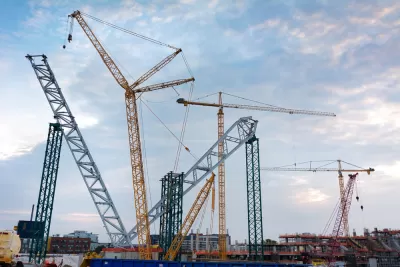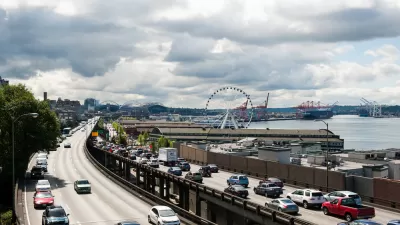Several new developments are adding funds to the pot of money in a streetcar district created by Minneapolis to circumvent a politically unpalatable tax increment financing district.

"About one percent of Minneapolis' tax capacity will be redirected next year toward a fund intended to one day pay for a streetcar line," reports Eric Roper. The streetcar line in question is the 3.7-mile Nicollet Avenue streetcar, which, according to Roper, is still far from certain.
According to Roper, the funding mechanism the streetcar "is hitting its stride as several new apartment towers have opened." But Roper raises the concern that the funds generated by the streetcar district won't be used to help "absorb the growing cost of city services."
"Those buildings now have $5.4 million in city tax capacity, which will aid the streetcar "value capture" district next year rather than helping absorb the growing cost of city services," explains Roper.
Minneapolis' value capture differs from traditional tax increment financing districts, writes Roper, because "Unlike tax increment financing, which pays for development with new taxes generated by that development, the streetcar district redirected taxes from a number of anticipated buildings toward a potential future project."
Roper includes more details about the developments that are now enriching the streetcar district. If the streetcar is to become a reality, the district is expected to pay for about $60 million in debt for the $200 million project.
FULL STORY: One percent of Mpls. tax capacity now aiding streetcar district

Alabama: Trump Terminates Settlements for Black Communities Harmed By Raw Sewage
Trump deemed the landmark civil rights agreement “illegal DEI and environmental justice policy.”

Planetizen Federal Action Tracker
A weekly monitor of how Trump’s orders and actions are impacting planners and planning in America.

Why Should We Subsidize Public Transportation?
Many public transit agencies face financial stress due to rising costs, declining fare revenue, and declining subsidies. Transit advocates must provide a strong business case for increasing public transit funding.

New California Law Regulates Warehouse Pollution
A new law tightens building and emissions regulations for large distribution warehouses to mitigate air pollution and traffic in surrounding communities.

Phoenix Announces Opening Date for Light Rail Extension
The South Central extension will connect South Phoenix to downtown and other major hubs starting on June 7.

How Housing as a Financial Product Harms Communities
Institutional buyers who treat housing as an investment product become disconnected from the impacts of higher rents, displacement, and housing instability.
Urban Design for Planners 1: Software Tools
This six-course series explores essential urban design concepts using open source software and equips planners with the tools they need to participate fully in the urban design process.
Planning for Universal Design
Learn the tools for implementing Universal Design in planning regulations.
Caltrans
Smith Gee Studio
Institute for Housing and Urban Development Studies (IHS)
City of Grandview
Harvard GSD Executive Education
Toledo-Lucas County Plan Commissions
Salt Lake City
NYU Wagner Graduate School of Public Service




























